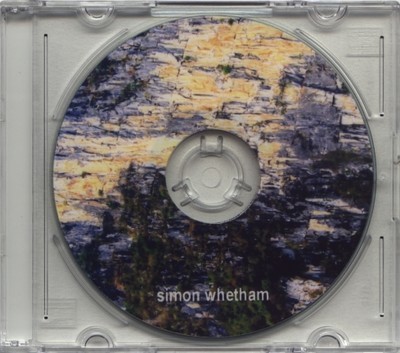Velvet. SIMON WHETHAM
(Taâlem 2011)
Simon Whetham’s Velvet [24:00] is released on taâlem. The label’s stated aim is to explore the different sides of ambient music through 3″ cd-r’s
I don’t know what ambient music is, any more than I know what minimalism is. If I did I would be able to make such music, music that might be bland and evasive but which might go some way to attracting kudos in influential circles.. Used haphazardly the term ambient has become almost meaningless, though it has its uses, especially between musicians and artists to describe anything that sounds a bit floaty. Or something derived from dj ambient which takes us to a different place altogether. So I wouldn’t describe Whetham’s music as ambient. I’d say it was a good example of textural composition based on field recordings. Let’s just put ambient to one side for just now, along with drone and minimalism.
There are more and more composers/phonographers/sound artists/(what you will) making new work with field recordings, working with layers of sound, dense complex textures, all towards a range of different intentions. I’ve also noticed that some of these artists are connected to each other across various networks and media in different ways which seems to me to be a good thing as each helps to promote the other’s work, to overcome a marked bias in some reviewing quarters against work based on field recording. For example, we have the notion that field recordings in a mixed piece (with instruments and/or electronics) somehow spoil, say, a piece of instrumental reductionist free improvisation because the sounds aren’t original, the ‘originality’ myth. As if an ebowed string or a fluttery sax is original and as if that matters in the wider musical context. Then we have the reality myth, the notion that a field recording is somehow connected with reality, so watery sounding sounds are in fact just water, or wind, or waves. This misunderstanding ignores context and a host of other important artistic concerns. I’d also point to the little known fact that there are other artists working in the same way as Simon Whetham here, enough in fact to be able to draw meaningful comparisons and to discuss what is successful and why, above and beyond the simple opinion of a dubious reviewer.
My remedy for these shortcomings would be to open one’s mind (unthinkable in many cases I know) and attempt to adopt new listening strategies. Many artists and specifically reviewers (who know it all because everyone’s an expert on music, right?) hate this suggestion and behave like right wing politicians confronted with new thinking on immigration. The suggestion that one doesn’t know everything there is to know about music or sound is unthinkable, an insult to the core of one’s being. But the sad fact is that we all need to learn to listen in new ways in order to come to terms with the ground on which some of this new music is built. That would mean closer and deeper listening strategies, to the environment, whatever that might be, and to the music. I don’t consider the ipod to be much of an environment by the way.
This preamble is relevant because a meaningful appreciation of Whetham’s velvet, as with other work in the idiom, requires new listening strategies, a setting aside of overcoded descriptors, a realisation that anything recognisable in the work is simply a representation and not some window into reality.
What we have here is a cushion of broadband sound, predominantly in the midrange, fluctuating, resonating ever so slightly at some frequencies. Low frequency bumps, then occasionally the intrusion of more foregrounded material, gristly, crunchy, more gestural if you like. In terms of esthesis, how we perceive the sounds, a variety of listening positions can be explored: wide field, close in, all encompassing, the sort of thing we’re supposed to do with some kinds of music but rarely do if we’re honest. In terms of poeisis, what the composer intended, I’d like to think that some consideration has gone into how the morphology and movement of the sounds is treated in a vertical sense – can we hear structures in the depth of the mix which have some consistency and relationship with the higher frequency material, the more easily recognisable gestural material? If not, should we perhaps be listening a little closer? Much of this goes beyond my aim in such a short review and is something I welcome you to figure out for yourself by buying the album and giving it some close listening, preferably right to the end for an unexpected treat in fine craftsmanship.
Finally, let’s not forget of course techniques of placement. Unlike a natural environment, where things just happen, or so it seems to me, often with exquisite randomness, a fabricated environment has to be fabricated, things placed in the mix, density and amplitude varied (or not). It seems to me appropriate enough to try to do these things with a view to some sort of naturalistic interpretation (in the very wide sense of the word naturalistic) so that the environment created has some legitimacy or feasibility in its flow and sonic integrity. Perhaps then we might consider works like Whetham’s as environments, listening environments or something similar, anything but ambient, but now there’s me trying to invent new terms….
–Caity Kerr


